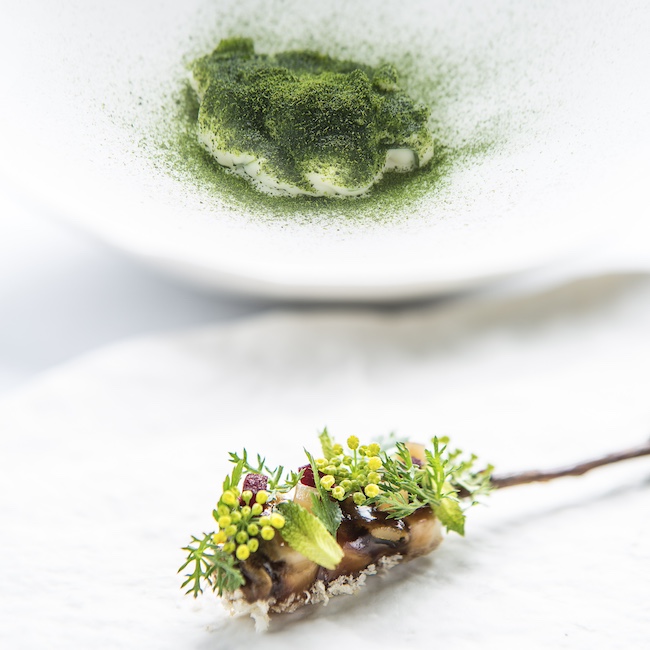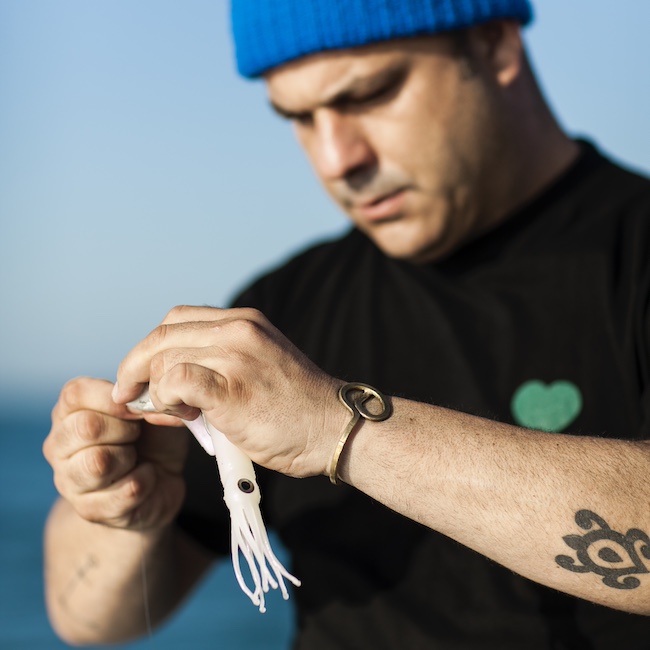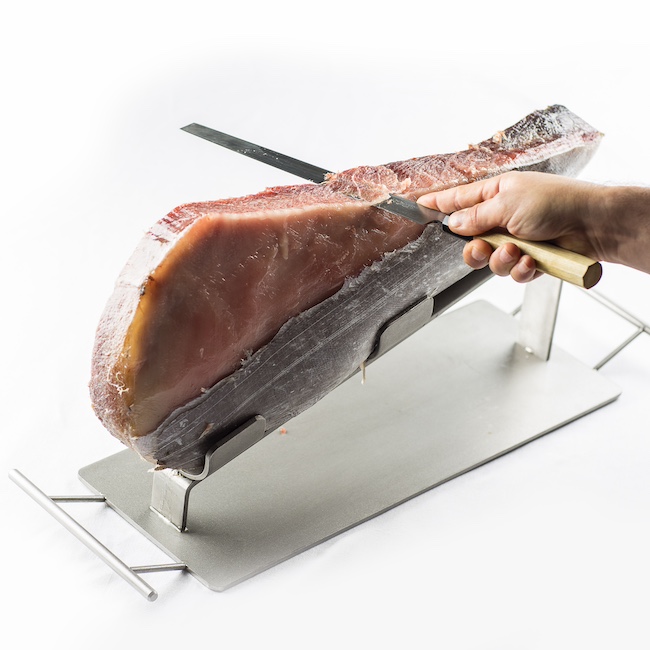by Ben Holbrook - @ben_holbrook
.png.transform/rendition-xs/image_image%20(1).png)

by Ben Holbrook - @ben_holbrook
Part marine biologist and part vanguard food technologist, Ángel León straddles the worlds of fine dining, ecology and agriculture
For most of us, the term “Spanish seafood” evokes scenes of sun-soaked restaurant terraces that tumble into a deep cobalt sea. Sizzling paella pans sprinkled with saffron, colossal lobsters served on beds of lemon, and giant gambas that beg to be washed down with gallons of crisp white wine. It is the stuff of foodie dreams, but as three-Michelin-starred chef Ángel León proves every day at his restaurant, Aponiente, in El Puerto de Santa María, in Cádiz, Andalusia, in southern Spain, this version of the dream barely scratches the surface of what is truly possible. For over a decade, León's obsession with “cooking the sea” has led him to many great gastronomic discoveries.
Drawing on atypical ingredients from the great pantry that is the sea, he has opened diners’ minds and challenged the world to imagine the true potential of the relationship between the sea and our stomachs.
One of the ingredients that essentially represents León's cuisine is plankton. “It is the purest flavour of the sea,” León explains. And it is the pivotal ingredient that has most excited the chef since he began his research. In fact, since announcing his edible phytoplankton in 2009, the ingredient has become something of a common ingredient in kitchens across the world.

In fact, León’s nickname, El Chef del Mar (Chef of the Sea), though undeniably apt, falls somewhat short of describing what he is truly achieving at Aponiente. Part marine biologist and part vanguard food technologist, León straddles the worlds of fine dining, ecology and agriculture. It’s not only the world of food that he is changing.
Picking up three Michelin stars along the way has enabled the continuation of León’s business, but more importantly it has allowed him to dig deeper into his research. But after hearing of his ambitions, it is not entirely unrealistic to think his next accolade could well be a Nobel Peace Prize.
Aponiente: Adversity, and Three Michelin Stars
It’s easy to imagine that a restaurant with three Michelin stars – the maximum number possible – must have strided into the world confidently and triumphantly. But for Aponiente, whose menu debuted dishes such as sea bacon, plankton, bioluminescence, and sea cucumber crackers, the early days were somewhat rocky.
“When we started serving plankton to customers, people told us we were stealing food from the whales. They also did not understand how we took advantage of discarded fish in a gastronomic restaurant to make avant-garde dishes. People expected something else.”
León is also credited for the creation of seafood–based charcuterie, making use of fish parts that are typically discarded. From delectable maritime mortadela salamis to fish-blood sausages, it’s a wonder no one else has thought of it before.
The first Michelin star was awarded to Aponiente in 2010, which “saved the restaurant because we were about to close,” León explains. “Nobody understood our philosophy,” he says, and “the unknown usually generates fear or rejection.”

But León’s ardent desire to “look at the sea with hunger” drove the restaurant forward and led to a slow but steady sea change. Diners go to Aponiente because they want to be surprised, to be enlightened as well as delighted. And León’s second Michelin star, awarded in 2014, validated this revolutionary new style of seafood.
Today, Aponiente is housed in a 19th century mill called the Molino de Mareas, a suitably striking and imaginative space that helped León and his team garner their third Michelin star in 2017.
Becoming “El Chef del Mar”
León’s passion for the ocean is deep and absolute. “My love for the sea was instilled by my father during my childhood when we went sailing together. I used to take it upon myself to clean the fish. I liked to dissect them, slit their bellies to see what they ate and see how the trophic chain worked, who ate whom.”
This fascination has never faded and it is the water worlds that continue to be a place of infinite wonder and opportunity for León.
“The sea is my place in the world where my fantasy overflows, where I disconnect and where I recharge my batteries. Where I catch my breath to return to dry land, going out sailing and fishing always, as life allows, does me good,” he explains.
As with his concept of seafood, León has a much broader understanding of the sea than most. From salt marshes and estuaries to inter-tidal zones, León is as excited about halophytic vegetation (saline plants) as most chefs are about fish and crustaceans.
Super-Seafood and Sustainability
The Aponiente R&D Laboratory is the manifestation of León’s ambition to discover and sustainably develop new sea-grown ingredients. As León explains, “Our dream is that one day people will be able to feed themselves exclusively with marine products that are not necessarily fish.”
León was initially propelled by a vision of the seemingly endless rice fields that grew in the waterways near his home in Cádiz. Since developing his understanding, however, he has realised that it was not rice at all, but Zostera marina, a common type of seagrass, or eelgrass, that grows naturally and abundantly in waters around the world.

Scientific research has long proven the importance of seagrass from an ecological perspective, but it was León who saw the potential that this ingredient could have alongside traditional land-grown grains.
“Its characteristics for culinary use range from boiling it like a rice or a pasta, to processing it into flour to make breads or dried pastas. For the first time ever, we at Aponiente have managed to grow this marine plant under controlled circumstances. In 2017, we began a groundbreaking study, which has revealed the plant’s feasibility for human consumption. What’s more, it might be considered a “superfood” given its unique nutritional qualities.”
In a comparative study with five other grains (rice, barley, wheat, oats and corn), León’s team has determined that their marine grain contains a greater quantity of high-quality proteins (13%), carbohydrates (82%, of which some 50% is starch), and less than 2% fat (vegetable). It also contains vitamins A and E, not found in any other kind of grain, as well as high concentrations of various B vitamins.
In addition to essential fatty acids, Omegas 6 and 9, and amino acids not found in other common grains and minerals, it also has significant levels of glucose, making it a superfood with exceptional qualities for a healthy diet.
So perhaps it is here, below the surface of the water rather than on dry land, that we will find the answer to one of the most pressing questions of today: how and where do we find enough food to feed nine billion people.
What’s more, as well as their nutritional credentials, these underwater farms could contribute to rebalancing the climate. Seagrass meadows are capable of absorbing and storing carbon up to 35 times faster than a rainforest of the same size. What’s more, seagrass protects coastlines against storms and erosion by dampening the force of waves.
To taste Ángel León’s revolutionary new seafood flavours, visit his three Michelin-starred restaurant, Aponiente, in the sunny climes of El Puerto de Santa María, Cádiz. Explore mind-expanding flavours like seaweed gummies, green-leaf escabeche with plankton, and crispy fish skin biscuit rolls. Extraterrestrial flavours harvested from the most mysterious corners of our seas.